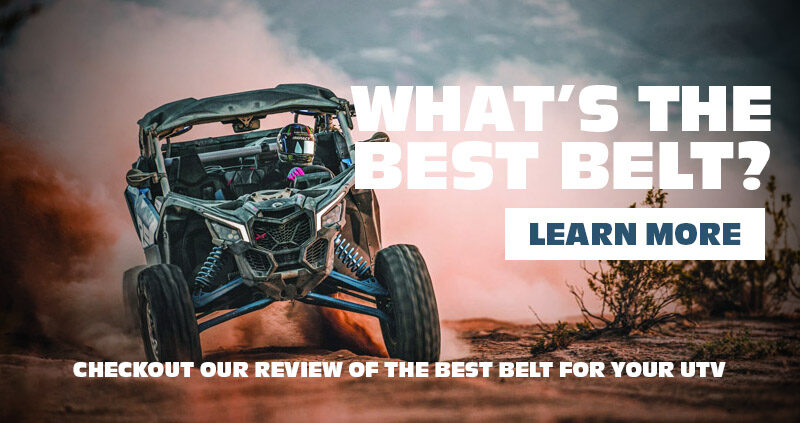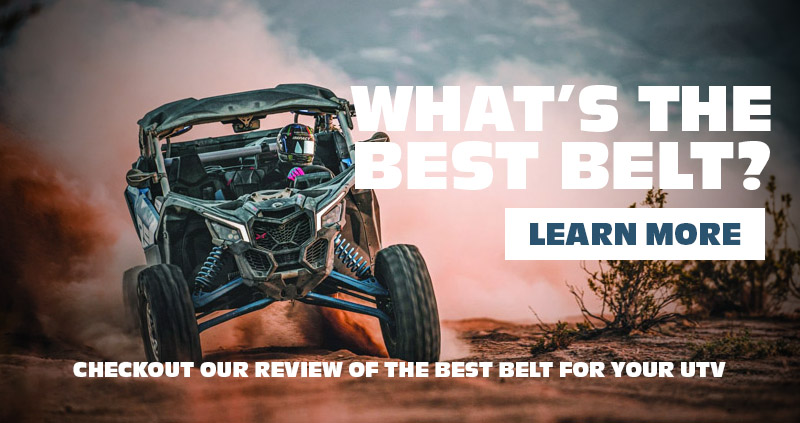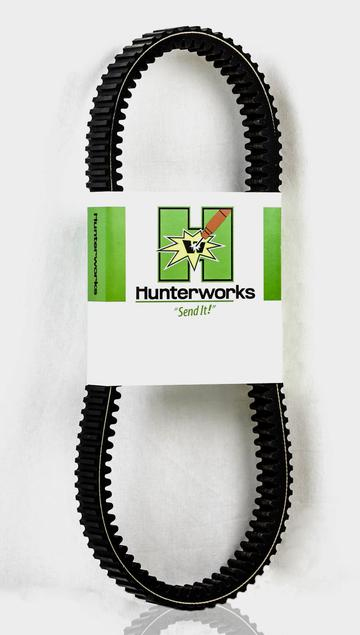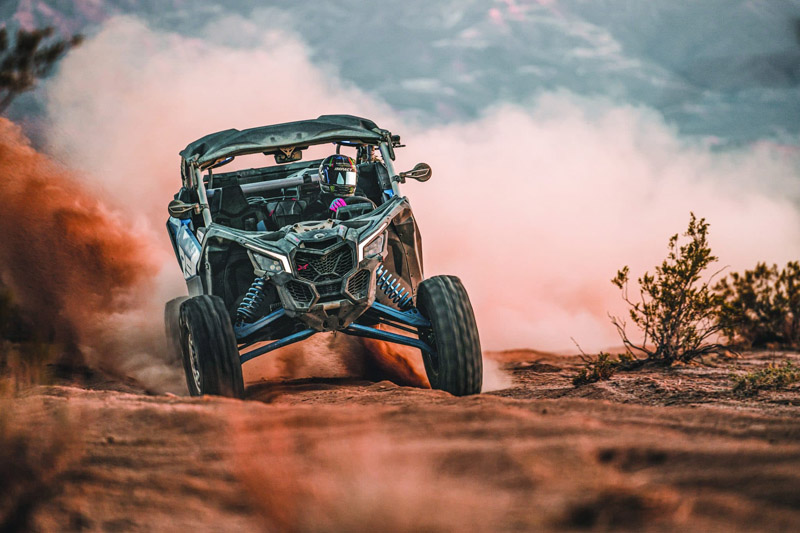
The Can-Am X3 is a force to be reckoned with, whether you’re out on the trails or just cruising through the countryside. With their powerful engines, responsive handling, and unbeatable versatility, these machines are capable of tackling just about any terrain with ease. But one crucial component that often gets overlooked is the drive belt, which plays a crucial role in delivering power from the engine to the wheels. Knowing what is the best Can-Am X3 Belt can mean the difference between a smooth, effortless ride and a frustrating, jarring experience. With so many X3 drive belts on the market, it can be tough to know which one to choose. So, what makes a great belt for your Can-Am X3? We’ll explore the key factors to consider when selecting a drive belt and help you find the perfect fit for your machine.
GBoost Worlds Best Belt
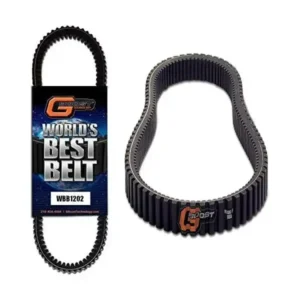
GBoost Worlds Best Belt
- Highest shock load rating
- Latest bottom cog design
- Aramid Fiber cord
$178 at time of publishing
The GBOOST Race Belt is a game-changer. Designed to replace the OEM belt, this belt is built to withstand the demands of extreme racing and intense side-by-side adventures.
Looking for a performance upgrade for your Can-Am? The GBoost World’s Best Belt is engineered to deliver unmatched reliability and power.
Enhanced Performance and Durability
- Robust Construction: Made with Aramid Fiber cord and a High Modulus Rubber Compound (BZX1) for superior strength and longevity.
- Vehicle Compatibility: Designed for Can-Am X3, Defender, Maverick, and Commander models.
- Customer Satisfaction: Boasts a 4.7-star rating from numerous users.
Why Choose GBoost?
- Optimized Power Transfer: The toothed/timing belt style ensures efficient and reliable power delivery.
- Peace of Mind: Backed by Amazon’s 30-day return guarantee, ensuring satisfaction.
- Top Ranking: Highly ranked in the Automotive and Powersports Drive Belts categories, reflecting its quality and popularity.
SuperATV Worlds Best Drive Belt

SuperATV Heavy-Duty World’s Best CVT Drive Belt
- Unbeatable Belt for Your UTV
- Made with an aramid fiber cord
- Built for high performance
$189.95 at time of publishing
These SuperATV Can-Am X3 Drive Belts are a good quality belt choice for your X3. This bad boy is built to withstand extreme abuse, excessive shock load, and high temperatures. It’s made for the real daredevils out there, the ones who like to push their Can-Am X3 XP 1000 to the limit.
This belt is ultra-strong. It’s made with an Aramid fiber cord that can handle more than 10,000 pounds of tension without breaking or stretching. That’s right, this thing is tough as nails. You can put it through the wringer and it’ll come out the other side without a scratch.
But what really sets this drive belt apart from the rest is its 100% fit guarantee. SuperATV is a family-owned business that takes product quality seriously. They field-test their products on over 600 acres of prime riding land to ensure you have the best quality UTV accessories. So you can rest easy knowing that this drive belt will fit your machine perfectly.
So, if you’re the kind of person who likes to live life on the edge, who likes to push the limits of what’s possible, then this drive belt is for you. It’s the real deal, built to withstand high temps and extreme abuse. So go ahead, have big tires, gear reduction, or a clutch kit. This belt was made for you.
Key Features
- Material: Aramid fiber cord and high-strength rubber
- Compatibility: UTVs, specifically 2017-2020+ Can-Am Maverick X3 models
- Warranty: 3-month warranty against manufacturing defects
- Return Policy: Amazon.com’s 30-day return guarantee
- Origin: Made in the USA
Additional Information
The belt is black, weighs 2 pounds, and is a CVT style belt. SuperATV offers a warranty against manufacturing defects on parts like heim joints, tie rod ends, ball joints, seal kits, drive belts, wheel bearings, brake lines, bushings, and brake pads.
Can-Am X3 OEM Belts
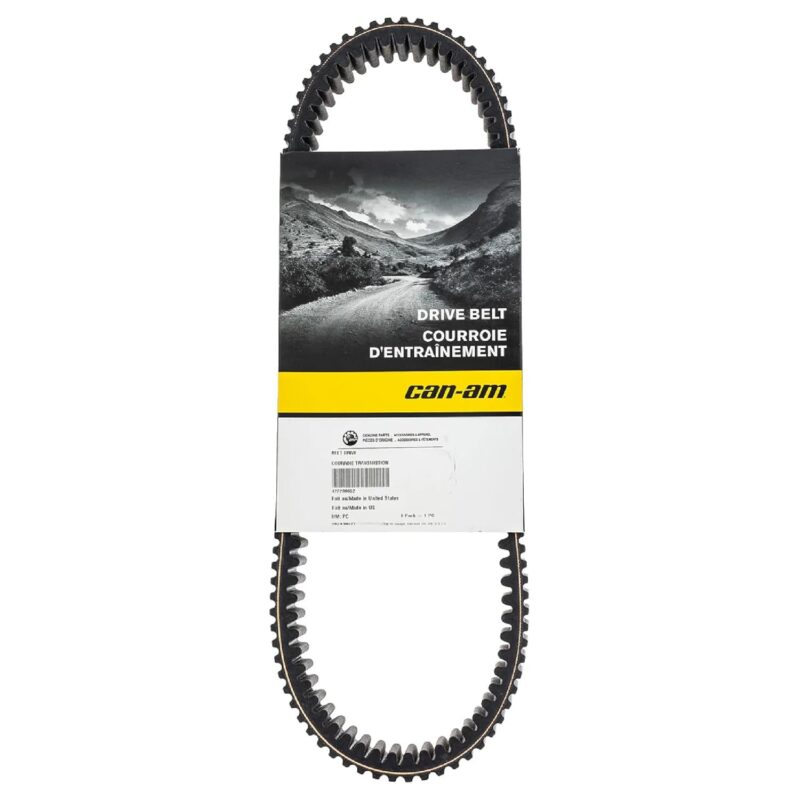
Can-Am OEM 100% PBO Performance Drive Belt
- High-performance and unique belt technology
- 100% cutting-edge PBO high-tensile strength polymer fiber construction
- Designed for high-temperature robustness and prolonged durability
We recommend using the OEM belts. How can you go wrong with a Can-Am OEM Belt? They offer easy installation and lasting power. These babies are the real deal, built for all terrains and tested to the max by the folks over at Can-Am.
These OEM parts are designed to run cooler and at optimal RPMs, ensuring maximum performance and durability out on the road. They’ve been put through 20,000 miles of field testing and over 18 months of development, so you know they’re the real deal.
They can handle anything you throw at ’em – mud, dirt, trails, sand, rocks, you name it. And they’re sturdy and reliable, built to last under the power of the X3. They’re engineered to run at the optimal RPM and deliver unmatched performance for your off-road vehicle.
And the best part? These belts are easy to install, with just three easy steps. You don’t need to be a rocket scientist to get these babies on your ride. Just use a clutch removal tool, remove the old belt, and replace it with the new one. Boom, you’re good to go.
Now, I know what you’re thinking – what about compatibility? Well, Can-Am has got you covered. OEM belts are made to just fit and take the hassle out of figuring out if you have the right belt.
Now, I know what you’re thinking. You read that one review, didn’t you? Where some poor sap buys the belt, installs it, drives two miles, and burns the belt. But let me tell you, that’s just a fluke. That’s why it’s important to buy from a seller who’s got your back. And with this belt, you’re covered. So, let me sum it up for you. You want a drive belt that fits like a glove on a whole lot of X3? You want a belt that won’t let you down and a seller who’s got your back? You want this belt and you want it now.
Evolution Powersports EVO Worlds Best Bad Ass Drive Belt Can-Am Maverick X3

Evolution Powersports EVO Worlds Best Bad Ass Drive
- Highest shock load rating to date being able to withstand the power of the 400hp machines
- Latest bottom cog design for greater rotational efficiency at full shift
- Aramid Fiber cord, versus polyester, wraps over bottom cogs for increased bottom cog strength
Looking to boost your Can-Am Maverick X3’s performance? Evolution Powersports offers two high-quality drive belts designed to enhance your ride. The Alpha Drive Belt promises top-tier durability and performance, while the Extreme (EX) Drive Belt provides excellent value. Both belts are compatible with 2017+ Can-Am X3 models, ensuring a perfect fit and improved power transfer.
Upgrade your UTV with Evolution Powersports drive belts and experience the difference. With positive customer reviews and a reputation for quality, these belts are a smart investment for any Can-Am X3 owner. Plus, with Amazon’s 30-day return guarantee, you can purchase with confidence, knowing you’re getting a product that delivers on its promises.
Key Details
Features and Specs:
- Compatibility: Both belts fit 2017+ Can-Am X3 models.
- Material: Aramid
- Dimensions: 15″L x 1″W
- Style: Belt Drive
- Color: Black
- Customer Reviews: The Alpha Drive Belt has a rating of 4.6 out of 5 stars based on 357 ratings.
What is a Can-Am X3 Belt?
A Can-Am X3 belt, also known as a drive belt, is an essential component of a Can-Am X3 transmission system. It’s responsible for transferring power from the engine to the wheels, enabling the vehicle to move. These belts are designed to withstand harsh conditions and are made from high-quality materials that can handle extreme heat and stress. X3 belts are engineered to be durable, long-lasting, and require minimal maintenance. They come in different sizes and styles to fit various Can-Am X3 models, so it’s crucial to choose the correct one for your vehicle. When it comes to choosing a Can-Am X3 belt, it’s important to consider factors such as durability, performance, and compatibility with your X3 model.
How does a Can-Am X3 Belt Work?
A Can-Am X3 belt is a crucial component of the vehicle’s transmission system. It is responsible for transferring power from the engine to the wheels. The belt connects the primary clutch and the secondary clutch, which are responsible for adjusting the gear ratio to optimize power delivery to the wheels.
When you press the accelerator, the primary clutch compresses the belt, which then rotates the secondary clutch. The secondary clutch adjusts the gear ratio to allow the wheels to spin at an optimal speed for the engine’s power output.
As the belt rotates, it generates heat due to the friction between the belt and the clutch sheaves. To prevent the belt from slipping, it is made from a durable and heat-resistant material.
In essence, a Can-Am X3 belt works by using the compression force generated by the primary clutch to transfer power from the engine to the wheels. It is a crucial component of the vehicle’s transmission system that needs to be maintained and replaced regularly to ensure optimal performance.
Types of Can-Am X3 Drive Belts
There’s no shortage of options out there, each one promising to be better than the last but what is the best Can-Am X3 Belt? You’ve got your OEM belts, your aftermarket belts, and everything in between. But which one is the right one for you? It’s like trying to choose between a whiskey sour and a cold beer on a hot day.
OEM Belts
First up, you’ve got your OEM belts, the ones that come straight from the manufacturer. They’re designed to meet the standards of your machine, so you can be confident they’ll work well. But they can be a bit pricey, and some riders say they don’t last as long as they’d like.
Aftermarket Belts
Then you’ve got your aftermarket belts, like the Hunterworks Belt we just talked about. These belts are engineered to meet or exceed OE standards, but often come with some added benefits like longer service life, better performance, and a more affordable price tag. But you’ve got to be careful with aftermarket belts, as not all of them are created equal.
Speciality Belts
And finally, there are those belts that are designed for specific needs, like high-performance belts for racing or heavy-duty belts for work. These belts often have unique features and construction that make them stand out from the crowd.
So which one is the best? Well, that’s up to you to decide. Each type of Can-Am X3 drive belt has its pros and cons, so it’s important to consider your needs, budget, and riding style before making a choice. Just like choosing between that whiskey sour and a cold beer, it’s all about what you’re in the mood for.
Features to look for in the best Can-Am X3 belt
When it comes to selecting a belt for your Can-Am X3, you want to make sure you’re getting the real deal. And by that, I don’t mean some cheap imitation or a knockoff that’s only going to last you a few months before you’re back to the drawing board. No, sir, you want a belt that’s going to stand up to the rigors of the trail and keep your X3 moving with the grace and power of a thoroughbred stallion.
Exceeding OEM Standards
So what features should you be looking for in a Can-Am X3 belt? Well, for starters, you want a belt that’s engineered to meet or exceed OE standards. That means it’s been built to the same specs as the original equipment, ensuring a perfect fit and optimal performance. You also want a belt that’s constructed with durable materials, so it can withstand the heat, friction, and wear and tear of constant use.
The Drive Belts Service Life
Another important factor to consider is the belt’s service life. You want a belt that will last you a good long while, without requiring constant clutch adjustments or replacement. A belt with a minimal stretch under load will help ensure consistent shifting and longer life, giving you more time to enjoy your ride and less time fussing with your X3.
Drive Belt Warranty
Finally, it’s important to look for a belt that’s backed by a solid warranty. A manufacturer who stands behind their product shows that they have confidence in its quality and performance, and you can feel more secure in your investment. A common sense warranty that covers any manufacturing defects or issues is a good indicator of a quality belt that you can rely on.
So when you’re in the market for a Can-Am X3 belt, keep these features in mind. Look for a belt that’s built to OE standards, constructed with durable materials, has a long service life, and is backed by a solid warranty. By doing your due diligence and selecting a top-quality belt, you’ll be able to hit the trails with confidence and enjoy the ride of your life.
Related Questions About Can-Am X3 Drive Belts
Can I Replace a Can-Am Drive Belt Myself?
Yes, you can it ain’t rocket surgery. You can swap out a Can-Am drive belt yourself. No need to fork over your hard-earned cash to a mechanic. Just grab your tools and get to work.
How Do I Know My Can-Am X3 CVT Belt Is Worn?
One of the most common injuries that X3 riders face is a worn-out drive belt. You check for glassy sides of the belts. Also, sluggish acceleration or jumping suddenly can be a sign of a worn belt
How Long do Can-Am X3 drive belts last?
When it comes to the Can-Am X3, one question that always seems to be on people’s minds is just how long that drive belt can hold out. Will it last you for hundreds of miles of trail riding, or is it more likely to give out on you just when you’re starting to hit your stride?
Why do X3 belts break?
X3 belt breakage can be attributed to several reasons, including overloading, harsh riding conditions, poor maintenance, or manufacturing defects. Overloading the vehicle or carrying excessive weight can strain the belt, causing it to fail. Similarly, riding in harsh conditions like extreme heat or dust can accelerate belt wear and reduce its lifespan. Lack of maintenance, such as not keeping the belt clean or ignoring signs of wear, can also lead to belt breakage. In rare cases, manufacturing defects may cause premature belt failure.
What does a failing drive belt sound like?
X3 belt breakage is a problem that can have several culprits. It could be due to overloading the vehicle with too much weight or putting it through the wringer in harsh riding conditions. Riding in extreme heat or thick clouds of dust can speed up the wear and tear on the belt, causing it to fail sooner. Neglecting to keep the belt clean or ignoring warning signs of wear and tear can also lead to breakage. And, in some rare instances, defects in the manufacturing process may cause the belt to fail before its time.
How do you break in a new X3 belt?
If you want to keep that X3 of yours runnin’ smooth and strong, you gotta give that belt the break-in it deserves. Don’t go slammin’ down the pedal and expect everything to work like a charm. No, sir. Take it easy for the first 5 to 10 miles, keep it in low gear if you got it, and vary them speeds. If you ain’t got low gear, take it moderate for 50 miles. And don’t forget, it ain’t just about the miles. Keep them engine RPMs low and steady, and you’ll be good to go.
Why do my belts keep ripping?
Why do my Can-Am drive belts keep ripping? Well, it could be due to overloading the vehicle or carrying too much weight, harsh riding conditions such as extreme heat or dust, poor maintenance, or even manufacturing defects. Take good care of your belt and avoid straining it, and you’ll have fewer problems.
How much does it cost to get a drive belt replaced?
If you’re handy enough, you can replace your X3 drive belt for less than two hundred bucks. Just grab a new belt for around 150 and some tools, if you don’t already have some, for 30 bucks, and you’re good to go.
Should you wash a Can-Am CVT belt?
Washing a new drive belt before installation is a hotly debated topic. But if you insist on giving it a bath, use warm, soapy water and let it air dry before you slap it on.
Are Can-Am X3 belts directional?
New belts don’t give a damn about direction, but used ones sure do. Directional arrows on some belts are just a reminder to put it back on the same way if you ever take it off. To prolong your belt’s life, it’s wise to always run it in the same direction.
Can you drive with a worn Can-Am drive belt?
Can you drive with a worn Can-Am drive belt? Well, you can, but it’s like walking around with a ticking time bomb in your pocket. You never know when it’s going to go off and leave you stranded in the middle of nowhere. So, if you value your time and sanity, it’s best to replace that worn belt before it’s too late.
What happens if you don’t change your Can-Am drive belt?
Well, friend, if you don’t change your Can-Am drive belt, you’ll eventually find yourself stranded in the middle of nowhere with a busted belt and a sour mood. A worn-out belt can break unexpectedly, leaving you high and dry on the trail or in the field. Not to mention, a damaged belt can cause other issues with your vehicle’s performance, leading to costly repairs down the road. So, don’t be a fool – keep that drive belt fresh and enjoy your ride without any unnecessary headaches.
Will a broken Can-Am drive belt destroy my engine?
No, it won’t destroy your engine. The rev limiter will kick in and you may get a light on your dash. Just shut her down and clean out the old drive belt and replace it with a new belt. Disconnect the battery to clear the dash light then reconnect it and get on with your day.
Can you spray wd40 on X3 belt?
Don’t do that WD40 is a lubricant and your UTVs drive belt works with friction applied to the belt. A lubricant reduces friction and would defeat the purpose of the belt.
Enjoy Your New Can-Am Belt
What is the best X3 belt? That’s the question many off-roaders ask themselves when they’re looking for a reliable and durable drive belt for their Can-Am X3. After researching and analyzing various options, we can conclude that the best X3 belt is one that meets the specific needs of your machine and driving style. It’s important to consider factors such as the year and model of your X3, the type of terrain you’ll be driving on, and your personal driving preferences. There are many high-quality options available on the market. With proper maintenance and installation, a good X3 belt can provide you with a smooth and enjoyable off-roading experience for many miles to come.

